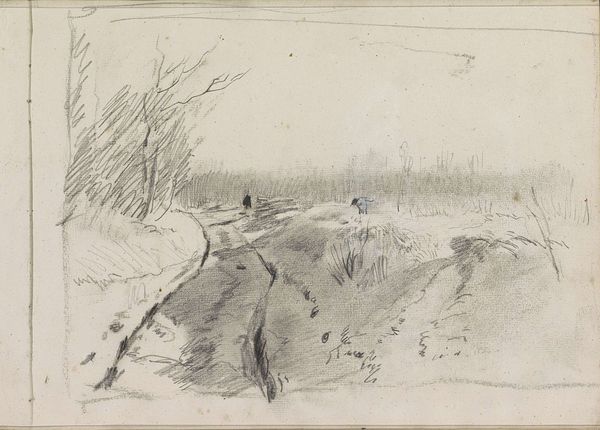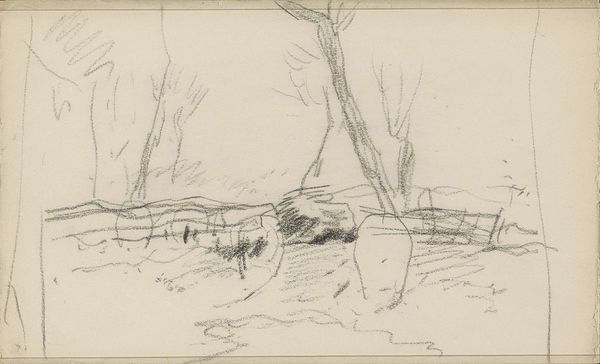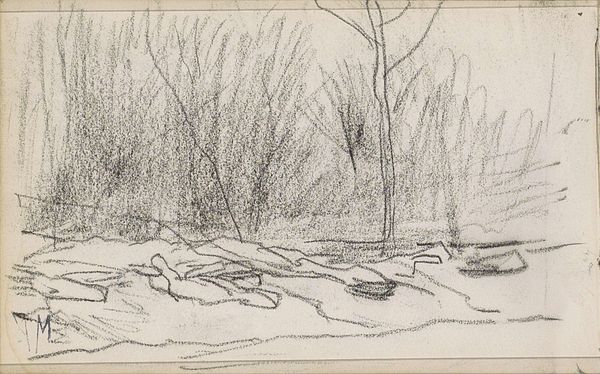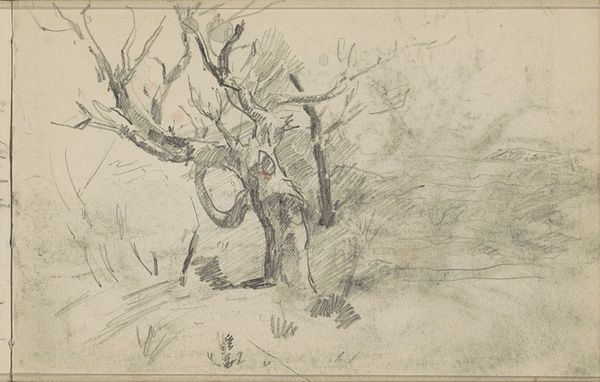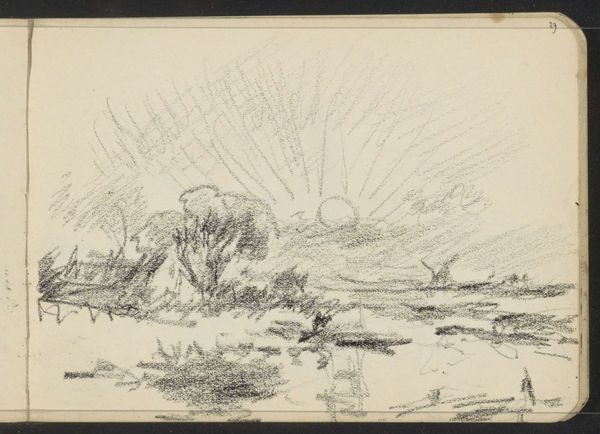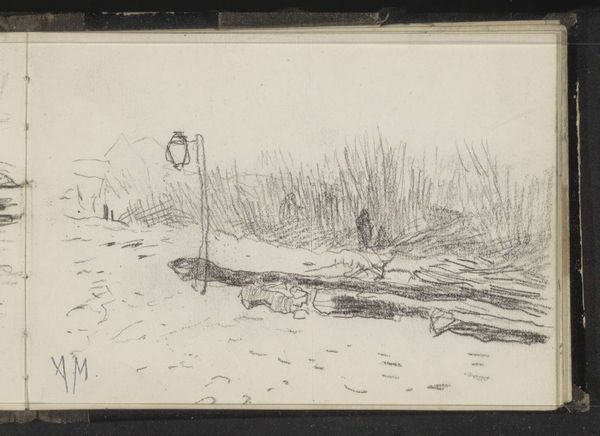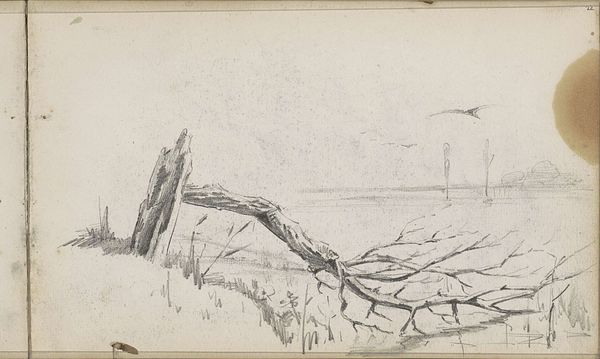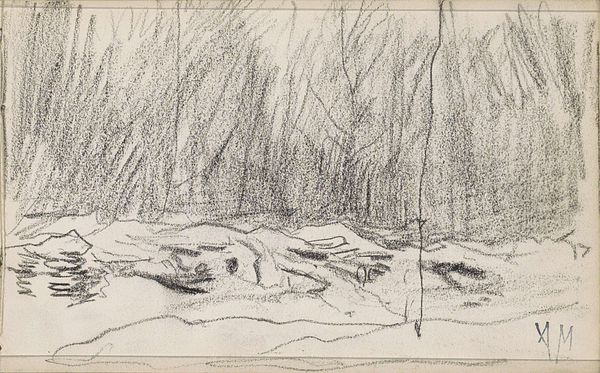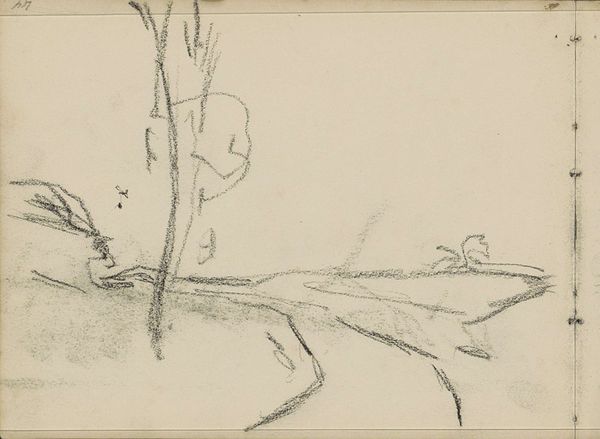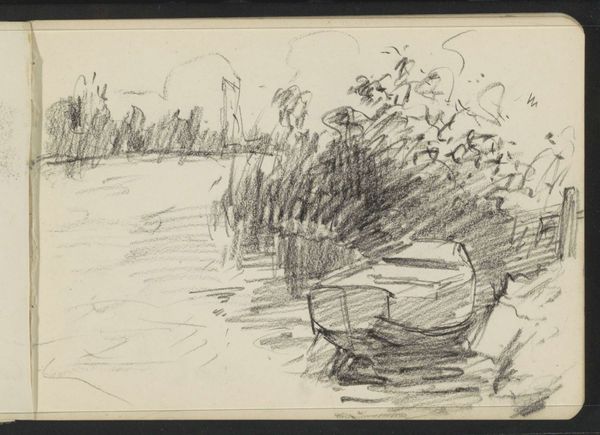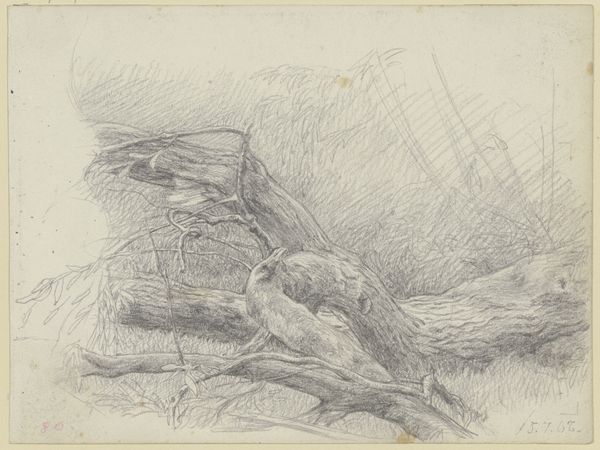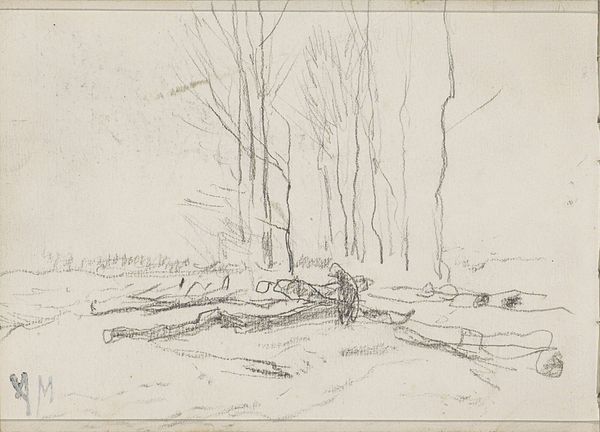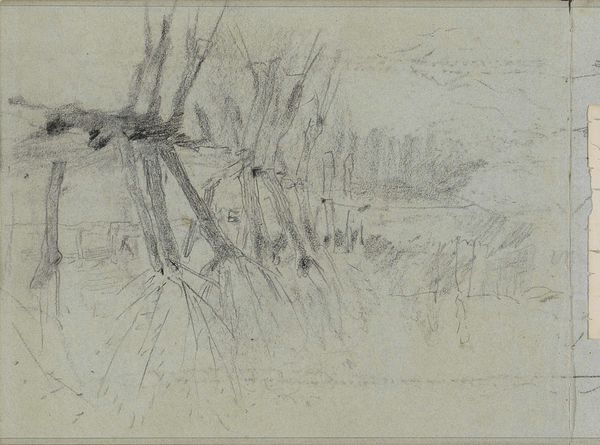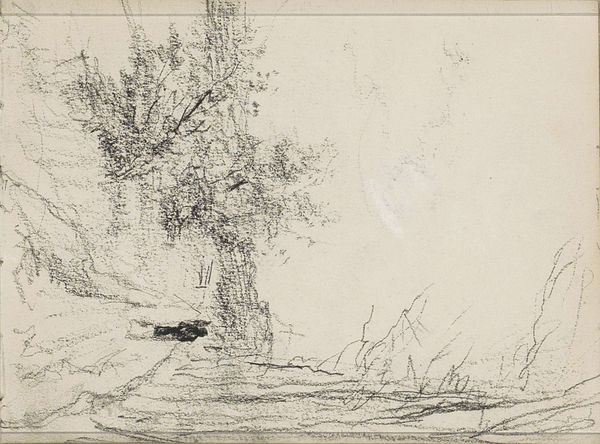
Dimensions: height 116 mm, width 162 mm
Copyright: Rijks Museum: Open Domain
Editor: Here we have Willem Cornelis Rip's "Aangemeerde roeiboot aan een waterkant," a pencil drawing from 1905. The sketchiness and muted tones create a sense of quiet isolation. How do you interpret the cultural context surrounding a piece like this? Curator: This image resonates with a rising interest in landscape as a marker of national identity and leisure in the late 19th and early 20th centuries. The 'moored rowboat' is not merely a vessel but symbolizes access to nature, a privilege becoming more democratized, though not universally, during this period. Consider who *could* afford the leisure to row or contemplate such scenes? Editor: So the simple scene isn't so simple! It makes me wonder about who the drawing was *for*. Was art like this trying to sell people something, a lifestyle, maybe? Curator: Precisely. Visual representations like this, readily disseminated via prints and even postcards, helped shape and popularize an idealized version of Dutch rural life, often masking the social inequalities that persisted. The 'realism' you see is carefully curated. The choice of such an ordinary, accessible scene promotes that fantasy. Does that change how you see it? Editor: It does! It seems like a sales pitch. What appears spontaneous might be more strategically manufactured than it appears. The image and the reality could have been different. Curator: Indeed! It shows how art engages in a complex dialogue with social and political forces, intentionally or otherwise, often subtly reinforcing particular worldviews. Editor: I guess you can't ever really see just the boat; you're also seeing how society *wants* you to see it. I'll look at landscape art differently now, wondering about who is included—and excluded—from the picture.
Comments
No comments
Be the first to comment and join the conversation on the ultimate creative platform.
